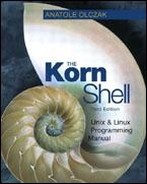The ulimit Command
The ulimit command manipulates system resource limits for current and child processes using the following format:
ulimit [options]
or
ulimit [options] n
where n indicates to set a resource limit to n (except with the –a option). If n is not given, the specified resource limit is displayed. If no option is given, the default –f (file size limit) is used. Here, all the current resource limits are displayed:
$ ulimit —a time(seconds) unlimited memory(kbytes) unlimited data(kbytes) 4294901761 stack(kbytes) 2048 file(blocks) unlimited coredump(blocks) unlimited
This command sets the core dump size limit to 500 blocks:
$ ulimit —c 500
To disable generation of core dumps, the dump size should be set to 0 blocks:
$ ulimit —c 0
To display the current file size write limit, use ulimit without arguments:
$ ulimit unlimited
Table 9.1 lists the ulimit options. If a size argument is not given, the current limit is displayed.
| –a | displays all the current resource limits |
| –c n | set the core dump size limit to n 512-byte blocks |
| –d n | set the data area size limit to n kilobytes |
| –f n | set the child process file write limit to n 512-byte blocks (default) |
| –m n | set the physical memory size limit to n kilobytes |
| –s n | set the stack area size limit to n kilobytes |
| –t n | set the process time limit to n seconds |
The ulimit command is system dependent. Some systems may have different resource limits, and some may not allow changing resource limits. Check your local system documentation for discrepancies.
